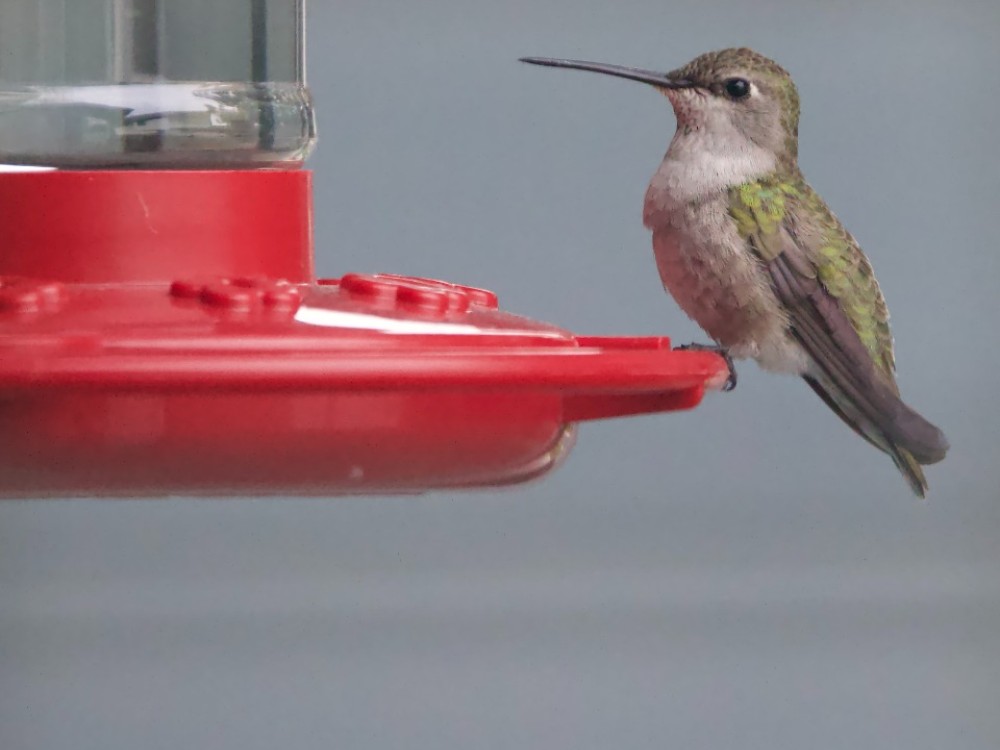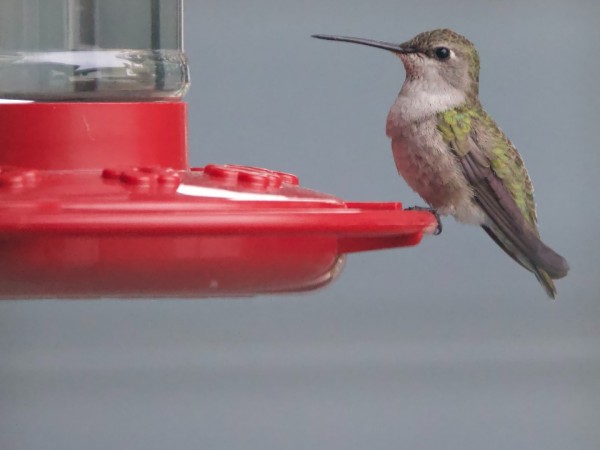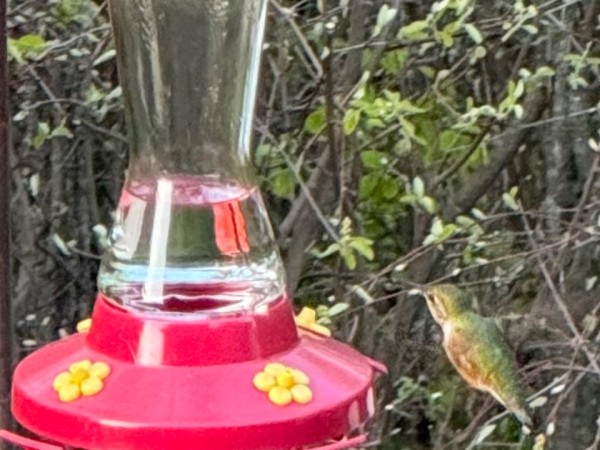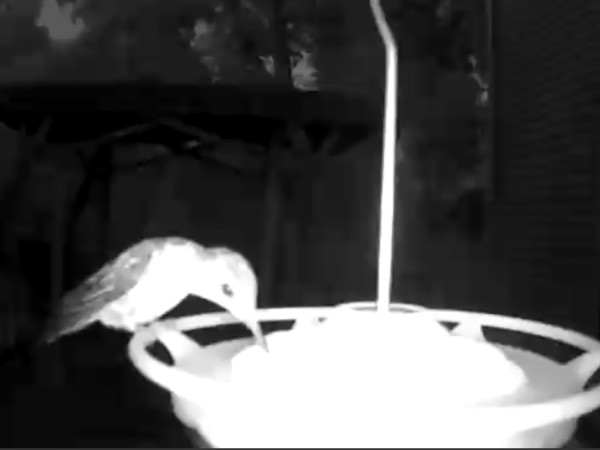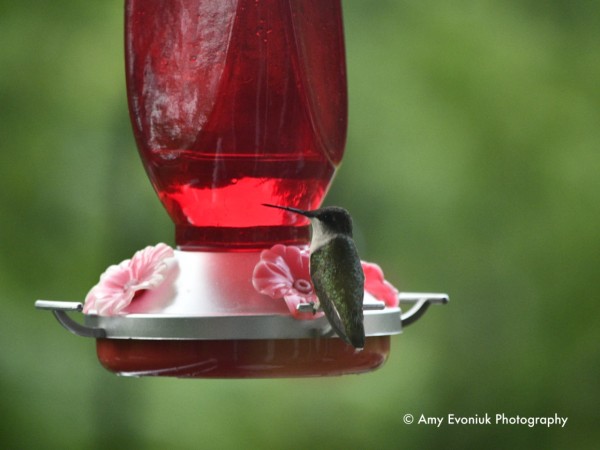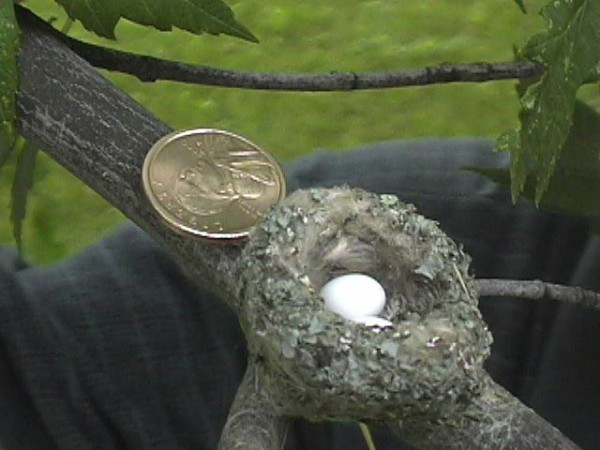As first sightings continue, participants provide behavior updates
While some first observations are still rolling in, we're receiving reports of hummingbird activities from across the continent, including the start of mating and frequent visits to flowers and feeders.
Hummingbird migration may be mostly winding down, but these small, sometimes elusive birds don’t always give us as many sighting opportunities as we might like, and many Journey North participants are still reporting initial observations, as well as other observations like nectaring on flowers or visiting feeders.
Western hummingbirds
Last week, we put out a call on social media looking for more hummingbird reports from western North America.
A few more reports have come in, which we love to see, but we’re always looking for more. Rufous hummingbirds have their own reporting category, while other hummingbirds can be reported by selecting “other species sighted” or “other observations,” as well as “nectaring from flowers.”
Angela in Elizabeth, Colorado, just south of Denver, wrote on June 4, “Mine were late. Pretty worried about it, with all the devastating weather south and east of Colorado. But then I noticed my first Adult male, Black-chinned, May 3, 2024. Then had an Adult male, Broad-tailed, May 4, 2024. I had my first female Black-chinned, May 9, 2024. As of today, I'm seeing 2 female Broad-tailed, 3 male Broad-tailed, One Black-chinned male. So as of today, 6. Here's a photo of my Black-chinned female... taken May 9, 2024.”
On May 25, Kerri in Magna, Utah, wrote, “I thought I had heard our hummingbird friends over the last couple of weeks but could not confirm the sound I was hearing with a sighting. Today, May 25, I saw 2 hummingbirds in our yard. They were chasing one another and then finally one of them fed on our honeysuckle vine growing along our post and rail fence in the front yard. Our friends have returned for the winter but not sure what kind they are.”
Debi in Nevada City, California reported two Anna’s hummingbirds on June 1, writing, “Have two that hang out on our Salvia all day.”
As for rufous hummingbirds, Curt in Surrey, British Columbia reported two on June 9 and Madisen in Radium Hot Springs, British Columbia reported one on May 25, writing, “STRIKINGLY orange bib, orange all over with a long, dark, thin beak. VERY small. Flies like a hummingbird, has tiny wings and longer tail feathers, seen alone around 8am.”
Eastern hummingbirds
Moving toward eastern North America, some first sightings are still rolling in.
“First one this spring migration,” wrote Chuck in Celina, Texas on June 1. “Surely more have come through, but weather has not been favorable to them.”
In Milwaukee, Wisconsin, Stephanie wrote on June 7, “First ruby hummer/hummers of the year. One came then gone a few hours, then I think another visited too and there were regular refill trips throughout the afternoon. Such joy♥️”
Across the state to the west, Paula in Richland Center, Wisconsin wrote on June 4, “I was so worried I wouldn’t find hummingbirds up here when I moved, but here they are! I had the feeder out, waiting just in case, and here they are!”
Others may not be reporting their first sightings anymore, but it has still been great to read reports of hummingbirds’ activities, such as what they are feeding on.
Trish in Ivesdale, Illinois reported the following on May 30, for example: “I have 1 female using the feeder as well as the honeysuckle that is in bloom. No idea what happened to the male that was here in April. At one point, there were 3 females over a 3 day period, but two have moved on leaving just the one.”
Jeanne in Meridian Charter Township, Michigan shared a bird feeder camera photo on June 8, writing, "This is at 5:39AM. Sunrise is at 5:59AM. She's there every morning."
Some have gotten really fortunate when it comes to hummingbird sightings.
“In the mornings and evenings I see at least 15 hummingbirds coming to the feeders,” wrote Patti in Hillsboro, Missouri on June 6.
Meanwhile, others have begun to witness the next stage of the life cycle: the start of mating, which will hopefully lead to successful nesting and increase the number of hummingbirds zipping around throughout the Americas.
On June 10, Sharon in Hudson, Wisconsin wrote, “8:15 AM male ruby throated performing mating flight swooping in arcs and then perching near feeder throwing head back to fully display sparkling red throat. Didn't see female.”
Additional hummingbird nest reading
Hummingbird nests aren’t much bigger than a ping-pong ball, with eggs the size of a jelly bean. When hummingbirds hatch, three of them combine to weigh less than one dime, but they’re ready to fly within about three weeks!
As the hummingbirds near you prepare to nest (or maybe have already started), click here to learn more about hummingbird nesting.
Keep reporting
Whether it’s your first report of the year or you’re lucky enough to have over a dozen hummingbirds visit you each evening, keep your reports coming!
You can report additional hummingbird observations, as well as sightings of monarch butterflies and other birds by clicking here.

